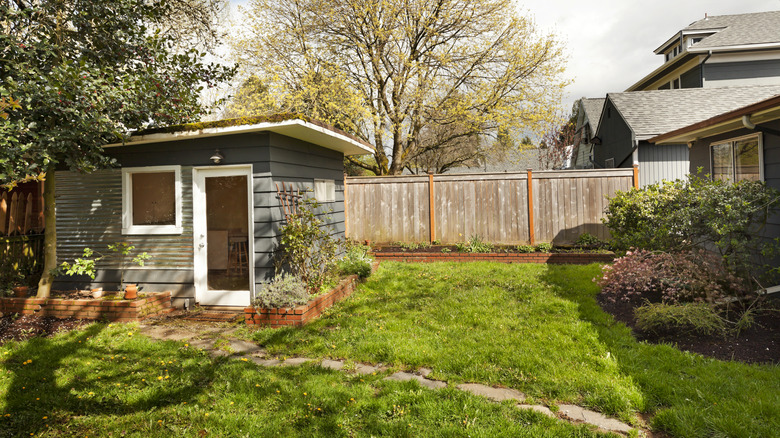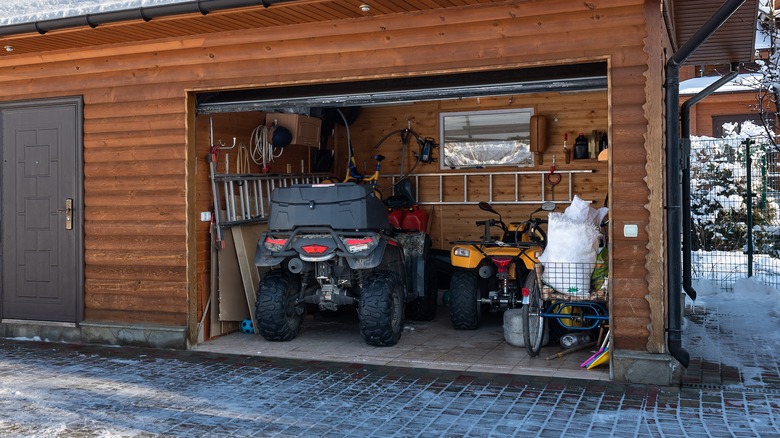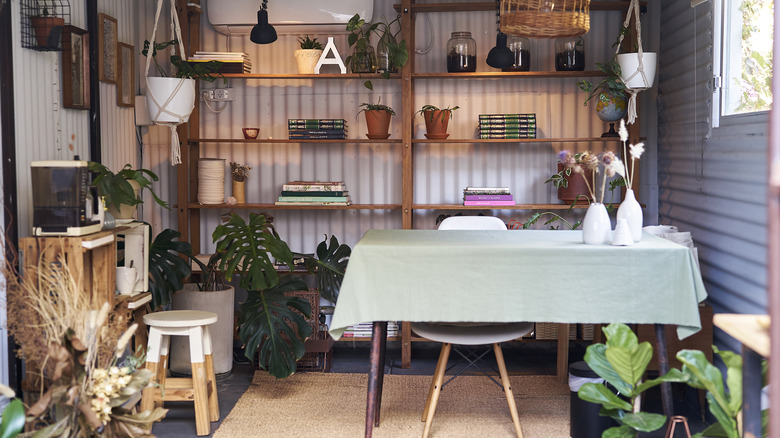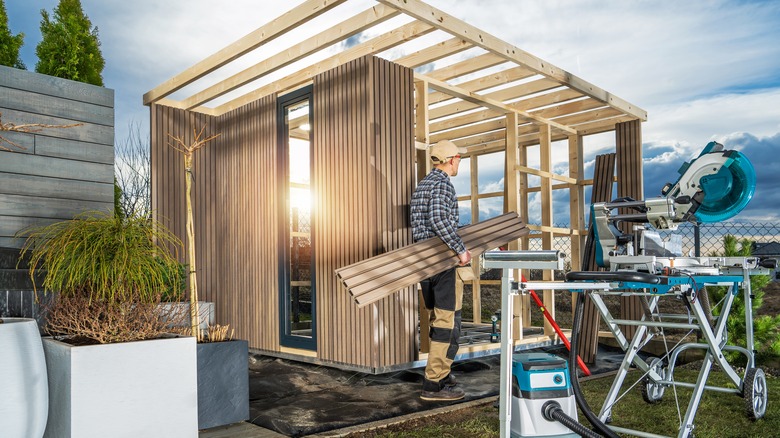Design The Perfect Storage Shed With These Sizing Tips (& Should You Buy Or DIY?)
Choosing the right size for a new storage shed can be surprisingly difficult. You might think you're just going to store some things you already own, but there are things you'll buy in the future and store in the shed, and there are things you'll buy specifically because you have one. Also, lots of people eventually use a storage unit for more than just storage: an art studio, perhaps, or a workout space. You can make it work with some tips to guide you along the way, and you might even find it's something you can build yourself.
Before you get ahead of yourself, you have two things to take care of. First, don't forget to secure a permit and get the go-ahead from your homeowner association. You don't want to risk what can happen if you DIY a shed without a permit or HOA approval. You'll also need a budget, which might become a major factor in sizing your shed. Durastor's excellent online Shed Designer can shed some light on your potential financial commitment. Maxing out shed size and all the options, you can spend over $25,000 for a Durastor storage building. Doing it yourself might at first seem less expensive, but unless you're used to construction estimation, things like permits, site prep, wiring, fasteners, and other hidden costs can sneak up on you when DIYing a storage shed.
Sizing your shed based on contents
The most sensible way to choose a storage shed size might also be the riskiest. It makes sense to determine what you're putting in there and how big it is and choose the shed based on that. But there's almost no chance that particular set of things will be the same list you have in a year, or half a year, or next week. Even with that in mind, though, you can at least get a ballpark shed size by examining all the contents. It helps to have a sample list of all the things people put in sheds –- bikes, cleaning supplies, lawnmowers, ATVs, workbenches, kayaks, and dozens more. LP's Shed Size Estimator has a nearly exhaustive list you can use to get started.
Take your list and estimate the floor space (or volume in three dimensions) each item will take up, including necessary clearance space around big items like riding mowers. Then add a percentage of that floor space to your total for additional items and those you may have forgotten — maybe 25%. All of this should yield rough square footage you can compare to standard shed sizes. But always remember that there are home items you really shouldn't be storing in an outdoor shed anyway, like food, electronics, books, photographs, and clothing. There's no need to plan (and pay for) space you probably shouldn't be using.
Other ways of choosing your shed size
If all of this seems like too much work, you can probably get a reasonable shed size estimate based on the size of your property: Buy up to an 80-square-foot shed for a small quarter-acre yard, up to a 120-square-foot building for a medium-sized yard up to a half-acre, and so on. It might seem imprecise, but it has some built-in wisdom: people with larger properties tend to buy more stuff that can usually be found outside, like riding mowers, tillers, etc. Your property size will also affect how much appropriate space you'll have for a shed, including a few extra feet for the foundation, maintenance access, and the like.
The most fun way to estimate a shed's size might not be to think about it as storage at all, but as what it might become. Durastor lists some common uses for sheds besides storage: art studios, offices, workshops, tiny houses, pool houses, garden sheds, and so on. Each use has its own size requirements, and they tend to be larger than you'd need for mere storage. SoundAssured, for example, suggests that a home recording studio with 8-foot ceilings should be 13 feet wide and 21 feet long; that doesn't include the typically 100-square-foot control room. But don't be alarmed; we've seen well-outfitted home recording studios with a full drum kit, vocal booth, mixing desk, keyboard, double bass, and much more that fit nicely into a well-planned 8x12 storage building.
Should size affect the choice to buy or DIY?
Whether or not you should DIY your storage shed is a big question, and it depends on your skill set and what exactly you mean by doing it yourself. A ready-to-assemble kit of any size will require about the same amount of know-how and it's probably manageable. If you are thinking about building a shed from the ground up from only a plan, you'll need either a baseline level of building skill or the time to learn some things. Take a look at this detailed example shed plan from LP; if you're comfortable with accomplishing what those diagrams show, carry on!
The size of the shed comes into play in a DIY build in a couple of ways. One is that scale dramatically affects materials, waste, and the number of cuts you'll need to make. Any time you can get away with installing full 4x8 sheet goods like plywood or OSB, for example, you can pick up a lot of efficiencies and cost-effectiveness. This might make a shed with 8x9 internal dimensions a bad idea since you'd be using a foot of a 4x8 sheet for the longer wall. Making the wall 9 feet long rather than 8 can lead to a lot of wasted material unless you're careful. Your potential long-term use affects size, which, in turn, affects decisions about framing, wiring, and heating/cooling, so you'll want to see how well your skills match those needs.




